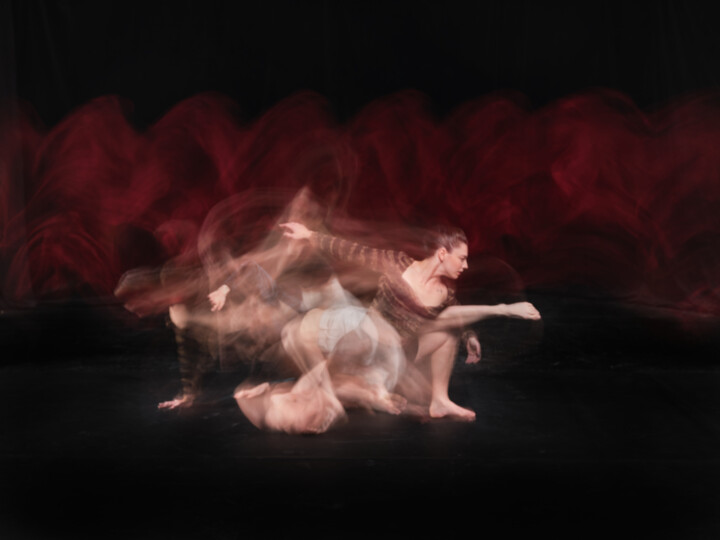-
Original Artwork
Photography,
Digital Photography
/
Non Manipulated Photography
- Dimensions Dimensions are available on request
- Artwork's condition The artwork is in perfect condition
- Categories Classicism Love
« Passion » raconte les retrouvailles du seigneur Macbeth et de Lady Macbeth, d’autant plus intenses après une longue attente due à la guerre. Ce passage de la pièce n’est pas explicitement décrit par William Shakespeare : le Seigneur rentre au château, il retrouve sa bien-aimée et partage leur vision d’outre-tombe, de pouvoir et de gloire à venir. Leurs corps s’entremêlent avec sensualité ; ils ne forment plus qu’un. Leurs esprits s’unissent, leur avenir se dessine et se trace avec passion.
Les images constitutives de la performance ont été réalisées sous la direction artistique de la chorégraphe Mélaine Raulet. Les chorégraphies d’Emmelyne Jonard et Léa Dosch sont interprétées et représentées dans des tableaux photographiques déclinants les trames narratives de la pièce.
Au travers de cette adaptation, le dialogue entre le photographe et la chorégraphe, au-delà des frontières interdisciplinaires, tient une place indispensable. Cette approche les invite à échanger, à s’ajuster, à décider, à s’exprimer, à s’écouter, à s’intervertir l’un l’autre, et plus encore à participer à une communion artistique. Forts de ce dialogue, les tableaux apparaissent à la lumière telle une toile pour un peintre.
Related themes
In Alexandre Maelst's eye, each movement of the model brings a special touch: a momentum, a color or an emotion that make the luminous force of his works. He uses continuous light as much as the flash, choosing to extend or freeze a moment of the observed choreography. Sometimes at the initiative of the choreography, he also collaborates closely with the people involved in each photographed project. His work is a condensation of movements and emotions experienced on stage, crossed by his gaze and made tangible by the lens of his camera.
Largely inspired by painting, particularly by the Impressionists and the work of Degas at the Opera, he also draws his visual culture from the sculptural works of Auguste Rodin and Raffeelle Monti. In photography, the work of Murray, Muybridge, Earnest Hass, Ansel Adams but also Malo, Flore and Zulli, give rise to his desire to join his contemporaries by reinventing the classic processes of taking pictures.
The particularity of his technique lies in the combination of different processes. In chronophotography, the model performs a choreography in front of the lens during a long exposure time and in continuous light, the flash is manually triggered and allows the artist to capture precise moments, anchored in an uninterrupted gesture.
Working upstream with the model, dancer or singer, he determines the direction taken by the work and begins a reflection on the subtleties of his photographic process. In this creative process, the movement of the model becomes the photographer's brush, the gesture in all its forms intervening as the central element of his sensitive approach, in film as in digital.
Through a process of reflection lasting from a few weeks to several months, Alexandre Maelst takes the time to reflect on the symbols and aesthetics invoked in each of his works. The few minutes of photographic shots then concretize his research: the image created opens a door and allows a passage from contemplation to reflection. Each of his compositions has a universe of its own: through a theme, a story and a thoughtful symbolism, he freezes the movement and deploys a new plastic meaning.
-
Nationality:
FRANCE

- Date of birth : 1977
- Artistic domains: Works by professional artists,
- Groups: Professional Artist Contemporary French Artists








